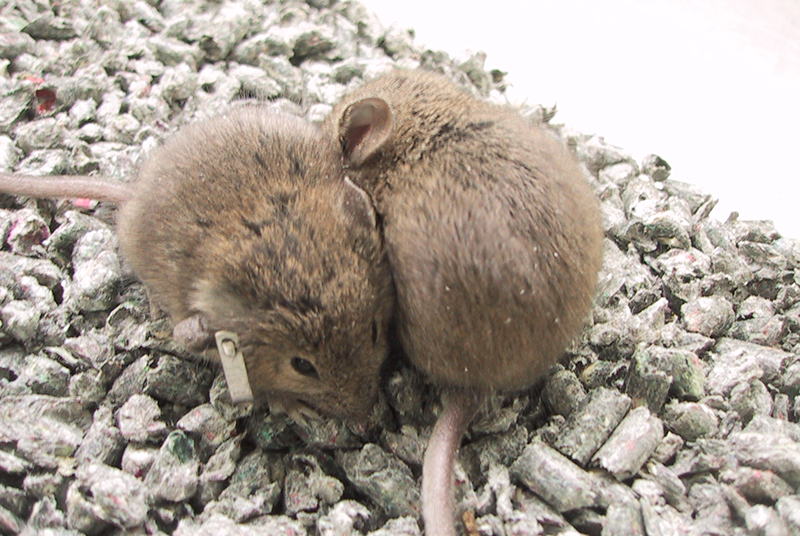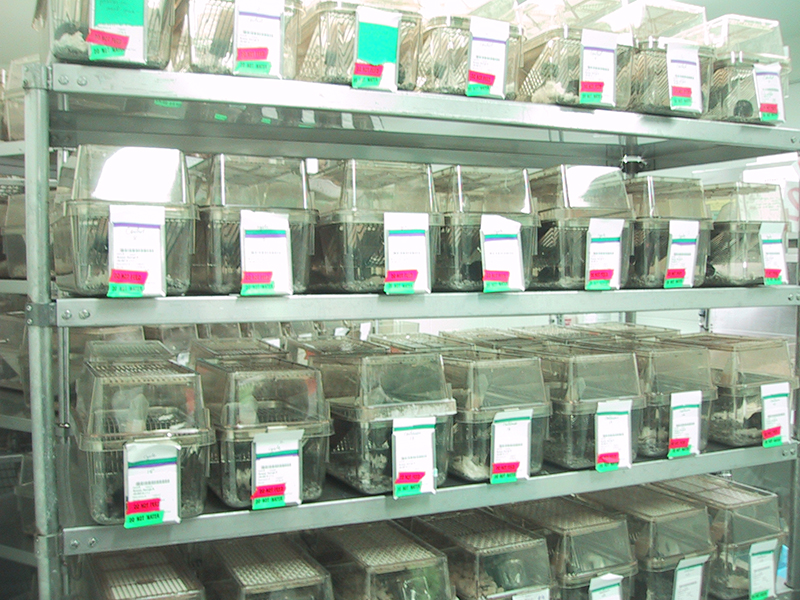UN INT Intro Text w/ Responsive Image - *Important Note* You must UNLINK this shared library component before making page-specific customizations.
Update: Following PETA's complaint to the National Institutes of Health Office of Laboratory Animal Welfare (NIH OLAW), the agency has substantiated several of the whistleblower's claims of incompetence and neglect at The Jackson Laboratory. Although OLAW conducted its "investigation" merely by asking Jackson staff to respond to the allegations, it verified that the tips of mice's tails were torn off; cages containing mice slated to be euthanized were severely crowded, which compounded the animals' suffering; and there have been chronic problems with leaking water bottles, which has resulted in soaked cages, compromising the welfare of the animals trapped inside.
In addition, PETA obtained NIH records documenting numerous incidents in which animals endured severe pain and distress in Jackson's laboratories as a result of incompetence and neglect. Mice suffocated to death after no one noticed that a power failure had cut off ventilation to their cages. In three separate incidents, mice died or had to be euthanized after Jackson personnel failed to give them food and water. The documents also prove that the laboratory can't manage to keep cages dry: Forty mice were in such bad condition after water bottles leaked into their cages that they had to be euthanized, and an undisclosed number of mice died or were euthanized after a sprinkler sprayed water on racks containing hundreds of cages of mice.

Mice are sensitive, empathic, and social animals who develop deep bonds, but at The Jackson Laboratory, they're treated like disposable laboratory tools.
PETA has uncovered stunning allegations of horrendous treatment of animals at The Jackson Laboratory—one of the world's largest breeders of mice for use in experimentation. We are going to the feds and demanding that they protect these vulnerable animals!
A whistleblower reports that these mice are abused and neglected in many terrible ways, including the following:
- Some Jackson employees use their fingers to tear off the ends of mice's tails in order to determine the animals' genetic makeup—even though this procedure is imprecise, can compromise the results of the testing, and creates a "crush injury" that can become infected and is characterized by extensive bruising and bleeding. Jackson could use less painful, less harmful genotyping methods, such as sampling of saliva, hair, or fecal pellets.
- Malfunctions in the watering system soak the mice's cages and sometimes drown them. The whistleblower removed multiple moldy, dead mice from these cages and observed one moldy mouse who was still alive.
- Some of the cages are so crowded that some mice sustain injuries from fighting each other, while others die because they can't reach food and water.
- Some employees fill euthanasia cages with twice as many mice as Jackson's own guidelines allow. Animals die slowly and painfully of asphyxiation.
- Workers falsify animal-care records. As the whistleblower put it, "Staffers will initial forms or make notations in the computer software that they've changed pens, checked and replaced enrichment items, checked water bottles, and so on—without actually doing those things."
Imagine if every aspect of your entire life depended on people who didn't care about you at all …

At The Jackson Laboratory, mice are confined to shoebox cages similar to these and are deprived of everything that's natural and important to them.
Jackson supervisors reportedly look the other away as workers mistreated or neglected animals in distress. The whistleblower overheard employees as they boasted about hiding violations from inspectors. When a female job applicant expressed concerns about animal welfare, an employee allegedly said, "Like [the supervisor] is going to hire some pregnant bitch that's gonna come up here and look at the way we illegally euthanize mice and threaten my job? I don't think so." When the whistleblower raised concerns about animal welfare, supervisors reportedly took no action and the whistleblower was allegedly harassed by other staff.
Mice may be tiny, but they feel and think as well as care for others. Studies show that they demonstrate empathy and show clear signs of distress when other mice are harmed. In 2015, Jackson subjected hundreds of thousands of mice to cruel experiments, shipped an additional 3 million of them to laboratories around the world—and posted annual revenues in excess of $200 million. The laboratory deliberately breeds mice to suffer from crippling health problems—such as cancerous tumors, obesity, paralysis, depressed immune systems, and high levels of anxiety and depression. It specializes in genetically modified mice, whom it breeds by adding human genetic material to or knocking out genes from the fertilized egg of a pregnant mouse—even though using such mice to study human disease has failed to lead to effective treatments and cures.
PETA is calling on the National Institutes of Health (NIH), the federal agency that in 2015 awarded Jackson more than $60 million in funding, to investigate and review all studies published by the laboratory, because the results may have been compromised by careless practices.
The latest allegations are part of a pattern of neglect and abuse at Jackson, whose CEO made PETA's infamous dirty dozen list.
It's time to stop this cruelty.
Please tell NIH to stop funding cruel and abusive experiments on mice and to redirect that money toward the development of superior, non-animal testing methods instead.